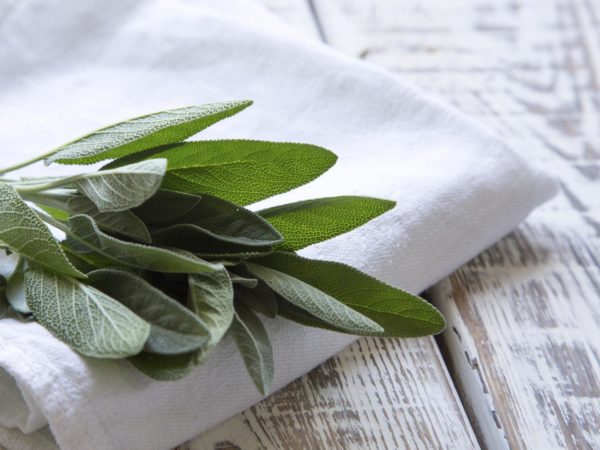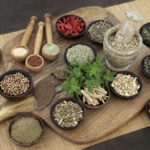Cooking With Spices: Sage

Sage (Salvia officinalis) is an herb known for both its culinary and medicinal uses. It comes from the Latin word salvere, which means “to be saved” – a nod to its health-promoting properties. Part of the mint family, sage contains volatile oils, flavonoids and phenolic acids. Its leaves are lance-shaped and gray-green in color, with a silver tinge.
Native to the countries near the Mediterranean, sage has been used as a flavoring and medicinal herb for thousands of years. Romans regarded sage as sacred and gathered it for ceremonial purposes. Both Greeks and Romans used it as a food preservative.
Medicinally, sage has a long history of use. It has known anti-inflammatory and antioxidant effects, and orally has been used to treat excessive perspiration, loss of appetite, hot flashes and other menopausal symptoms, gastrointestinal issues, and sore throat. People with inflammatory conditions such as rheumatoid arthritis, asthma and atherosclerosis may find increasing their consumption of sage reduces their symptoms. Sage may also address cognitive issues including Alzheimer’s disease, and mental health conditions including depression. At least one double-blind study suggested that sage may significantly improve short term memory.
Topically, sage may help alleviate laryngitis, gingivitis, minor oral injuries, and nasal, mouth and skin inflammations. It can be used as an inhalant for asthma.
Other uses include serving as a natural hair color preservative, and as an antioxidant additive for cooking oils that helps prevent rancidity and extend shelf life.
Nutritionally, sage is a good source of vitamin K.
Dr. Weil’s take on sage:
Sages of all kinds grow prolifically in my southern Arizona garden, so I am never without an abundant supply. As a culinary spice, sage provides a subtle, savory flavor that is extraordinarily versatile. It is available fresh or dried, but fresh is the better choice when it comes to cooking for the most appealing flavor. If you can’t grow it yourself, look for leaves that are a vibrant grey-green color, and store them in a damp paper towel placed inside a loose plastic bag in the refrigerator; they should keep for several days. Dried sage should be kept in a tightly sealed container away from light and heat; it will keep for up to six months.
You can use sage in a variety of ways: as a seasoning in tomato sauces; to flavor meats and cheeses (Vermont cheddar cheese uses it as a spice); and as a marinade – a good choice as it can help reduce formation of carcinogenic compounds when grilling meats. It can also be added to stuffings, and can be fried and served as an appetizer. In China, sage is brewed and consumed as a tea – and has been since ancient times. When cooking with sage, add it just before serving for the most vibrant flavor.
More information on sage:










